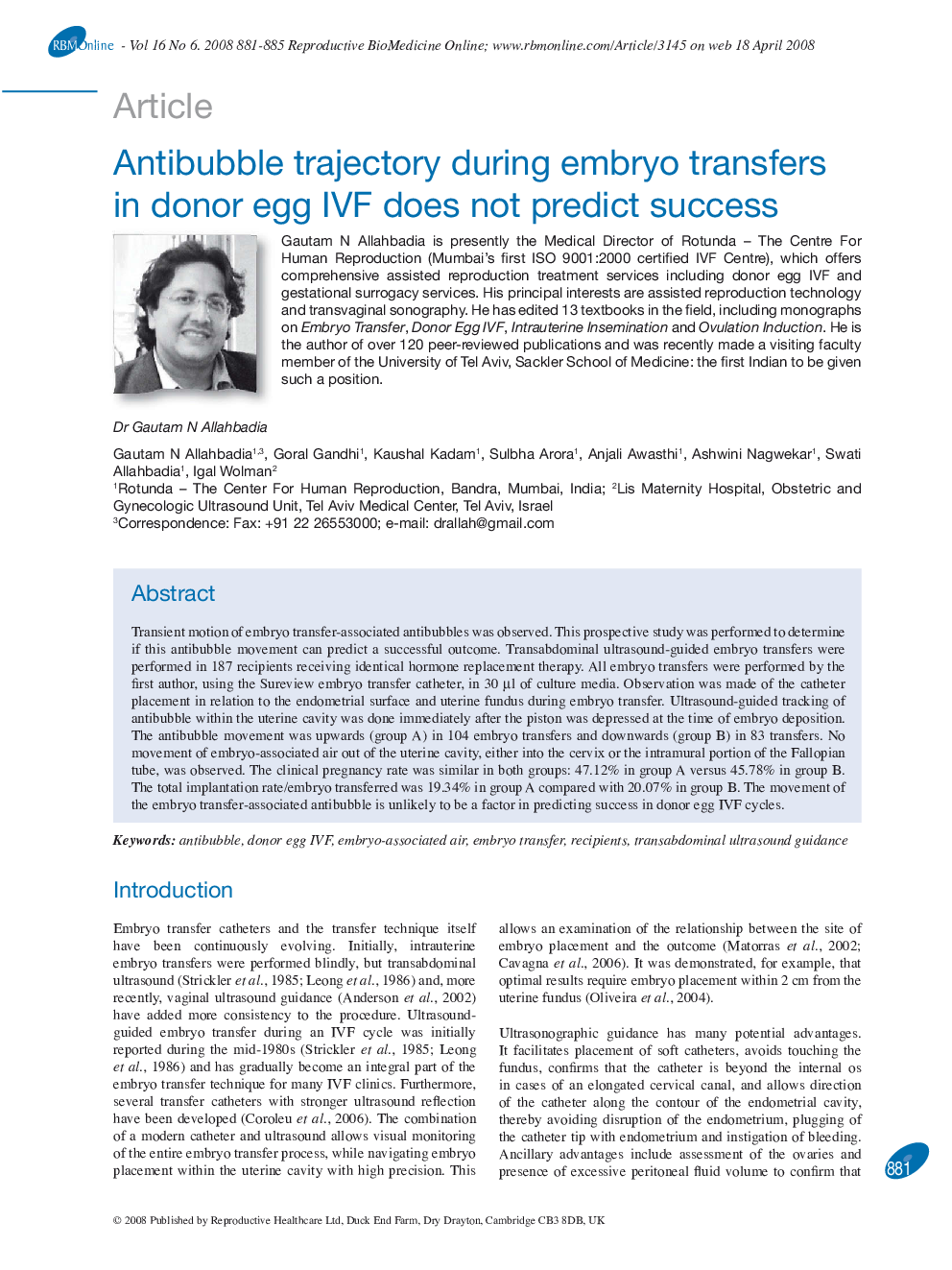| Article ID | Journal | Published Year | Pages | File Type |
|---|---|---|---|---|
| 3972485 | Reproductive BioMedicine Online | 2008 | 5 Pages |
Transient motion of embryo transfer-associated antibubbles was observed. This prospective study was performed to determine if this antibubble movement can predict a successful outcome. Transabdominal ultrasound-guided embryo transfers were performed in 187 recipients receiving identical hormone replacement therapy. All embryo transfers were performed by the first author, using the Sureview embryo transfer catheter, in 30 μl of culture media. Observation was made of the catheter placement in relation to the endometrial surface and uterine fundus during embryo transfer. Ultrasound-guided tracking of antibubble within the uterine cavity was done immediately after the piston was depressed at the time of embryo deposition. The antibubble movement was upwards (group A) in 104 embryo transfers and downwards (group B) in 83 transfers. No movement of embryo-associated air out of the uterine cavity, either into the cervix or the intramural portion of the Fallopian tube, was observed. The clinical pregnancy rate was similar in both groups: 47.12% in group A versus 45.78% in group B. The total implantation rate/embryo transferred was 19.34% in group A compared with 20.07% in group B. The movement of the embryo transfer-associated antibubble is unlikely to be a factor in predicting success in donor egg IVF cycles.
